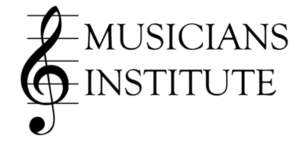
WARM-UPS FOR YOUR INSTRUMENTAL GROUP – PART 2 – HOW?
Jeff Cranfill
Using short pieces, exercises or scales is ideal for beginning a rehearsal. Before the demands of many orchestra pieces, these warm ups give the orchestra an opportunity to focus on these aspects of performance. They help set the course for how they will play for the rest of the rehearsal.
These 10 tips can help these warm ups to be increasingly more fruitful:
- Really play scales? Yes! Music that groups play for church services today cover pretty much all keys. Music in concert E or Db comes around fairly regularly. The best way to be able to play well in any key is to know well the scale on which the key is based. When pieces coming up in the rehearsal include passages in difficult keys, play the scale(s) first. Playing scales over time can help groups become adept at playing in any key.
- Emphasize active, rather than passive playing. The players need to really pay attention to all aspects of what they are doing, as opposed to playing on auto-pilot. If they are not focused, start one of the pieces, stop conducting, but have them continue playing. They will have to play actively to hold it all together. That is active playing.
- Players must listen to others while they play – be no louder or softer than the players around them:
If all you can hear is you – you’re too loud – back off some.
If you can’t hear yourself – you’re too soft – play stronger.
- Vary your tempos – don’t be too predictable – make sure the orchestra follows you. If not, stop and teach them to stay with you. Give clear beginning, beats, and cutoff.
- Vary dynamics – none are written, so assign the dynamic you would like for them to use. Even try varying dynamics within the piece – they follow your lead.
- For legato pieces – teach the concept of playing horizontally – emphasizing long, broad lines, rather than vertically – as in marcato style.
- For intonation – players need to know when they hear a problem. When you hear something is not in tune, assume it is you and adjust your pitch. If it gets worse – you guessed wrong. Adjust in the other direction.. As the saying goes – tuning is not an event, it is a process.
- Bring out the melody. Teach players with the melody to play just a bit stronger. Teach players with accompaniment to listen for the melody while they play.
- Teach the rise and fall of melody lines and musical phrases – there needs to be a slight crescendo and decrescendo with that rise and fall.
- Keep an even sound – don’t let the high notes protrude loudly, and the low notes fade out softly.
- Have them play with musicality – even on warm ups.
When players focus on the details of playing at the beginning of rehearsal, all of the results that follow will improve. Over time, the players improve – as does the entire group. When players come to play, then want to do it well, and feel like they are making progress. This progress begins with effective and efficient warm ups at the beginning of rehearsal.
Click for Warm-Ups available from Jeff Cranfill Music
See also
Effective and Efficient Instrumental Rehearsals – Part 2
